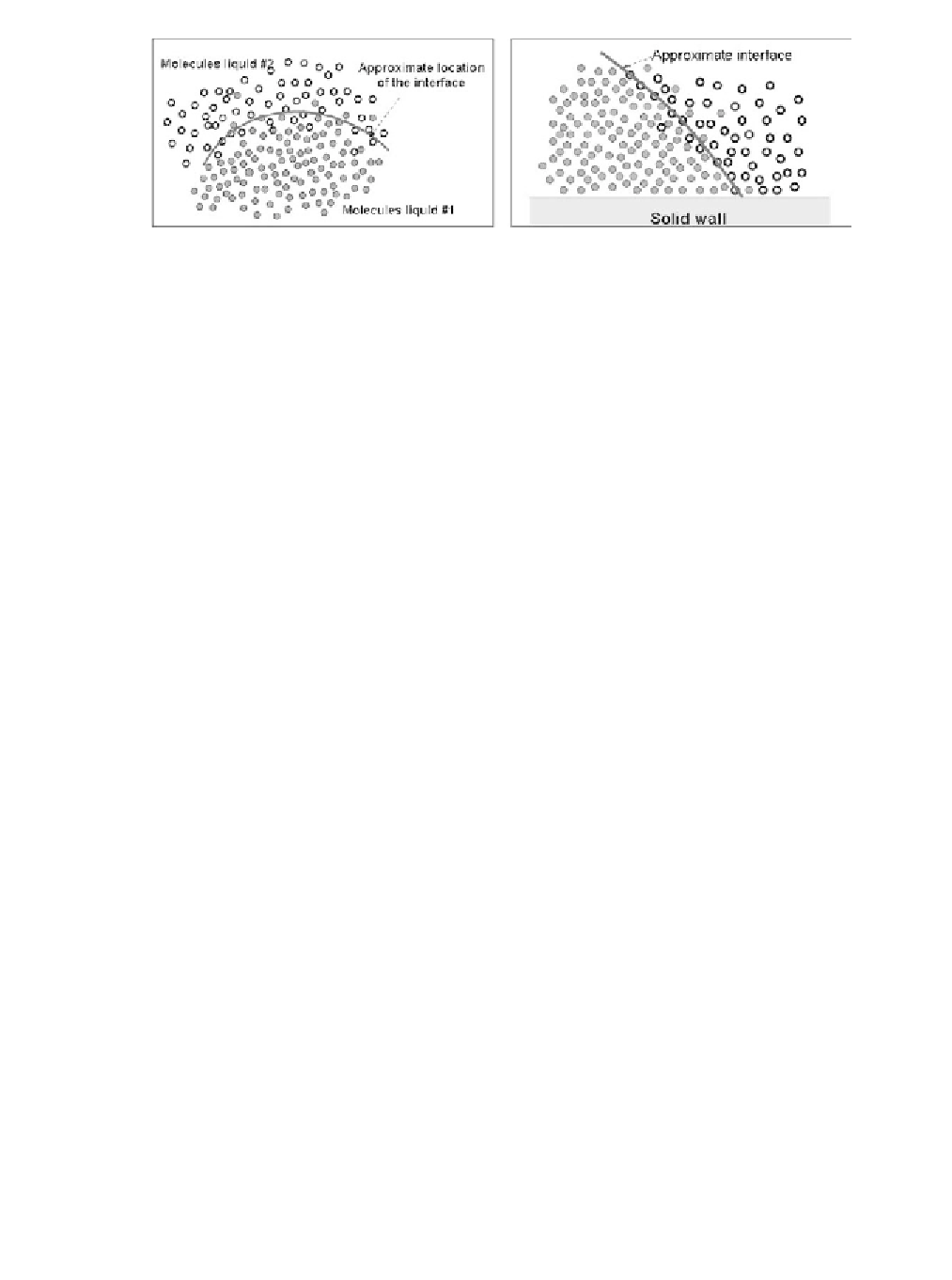Biomedical Engineering Reference
In-Depth Information
Figure 3.1
(a) Schematic view of an interface at the molecular size. (b) At the contact of a wall, a
triple line forms.
hydrogen bonds for polar liquids such as water [1]. On the other hand, molecules
at an interface have interactions in a half space with molecules of the same liquid,
and in the other half space interactions with the molecules of the other fluid or gas
(Figure 3.3).
Consider an interface between a liquid and a gas. In the bulk of the liquid, a mol-
ecule is in contact with 4 to 12 other molecules depending on the liquid (4 for water
and 12 for simple molecules); at the interface this number is divided by 2. Of course,
a molecule is also in contact with gas molecules, but, due to the low densities of
gases, there are less interactions and less interaction energy than in the liquid side.
The result is that there is locally a dissymmetry in the interactions, which results
in a defect of surface energy. If a molecule at the interface is pushed outwards by
Brownian motion, it is immediately pulled back towards its bulk phase by molecu-
lar interactions. At the macroscopic scale, a physical quantity called
surface tension
has been introduced in order to take into account this molecular effect. The surface
tension has the dimension of energy per unit surface and in the International System
it is expressed in J/m
2
or N/m (sometimes it is more practical to use mN/m as a unit
for surface tension). An estimate of the surface tension can be found by consider-
ing the molecules' cohesive energy. If
U
is the total cohesive energy per molecule,
a rough estimate of the energy loss of a molecule at the interface is
U
/2. Surface
tension is a direct measure of this energy loss, and if
d
is a characteristic molecular
dimension and
d
2
is the associated molecular surface, then the surface tension is
approximately
U
2
γ
»
(3.1)
2
δ
Figure 3.2
Macroscopic view of the interface of a drop.



